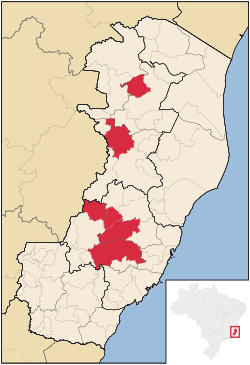Low German dialect
.mw-parser-output .hidden-begin{box-sizing:border-box;width:100%;padding:5px;border:none;font-size:95%}.mw-parser-output .hidden-title{font-weight:bold;line-height:1.6;text-align:left}.mw-parser-output .hidden-content{text-align:left}@media all and (max-width:500px){.mw-parser-output .hidden-begin{width:auto!important;clear:none!important;float:none!important))You can help expand this article with text translated from
the corresponding article in Portuguese. (September 2018) Click [show] for important translation instructions.
Machine translation, like
DeepL or
Google Translate, is a useful starting point for translations, but translators must revise errors as necessary and confirm that the translation is accurate, rather than simply copy-pasting machine-translated text into the English Wikipedia.
Consider
adding a topic to this template: there are already 464 articles in the
main category, and specifying|topic= will aid in categorization.
Do not translate text that appears unreliable or low-quality. If possible, verify the text with references provided in the foreign-language article.
You must provide
copyright attribution in the
edit summary accompanying your translation by providing an
interlanguage link to the source of your translation. A model attribution edit summary is Content in this edit is translated from the existing Portuguese Wikipedia article at [[:pt:Língua pomerana]]; see its history for attribution.
You may also add the template ((Translated|pt|Língua pomerana)) to the
talk page.
For more guidance, see
Wikipedia:Translation.
East Pomeranian (Ostpommersch) or Farther Pomeranian (Hinterpommersch) is an East Low German dialect moribund in Europe, which used to be spoken in the region of Farther Pomerania when it was part of the German Province of Pomerania, until World War II, and today is part of Poland. Currently, the language survives mainly in Brazil, where it is spoken by descendants of German immigrants of the 19th century and where it was given its own script by the linguist Ismael Tressmann. It has co-official status in 11 Brazilian municipalities and has been recognized as a historical and cultural heritage of the Brazilian state of Espírito Santo. East Pomeranian is also spoken in central Wisconsin and parts of Iowa, in the United States.
Nowadays, spoken East Pomeranian in Brazil has mostly been influenced by Portuguese language and Hunsrik, a German dialect derived from the Hunsrückisch native to Brazil. It excludes the dialect spoken in the United States, known as Wisconsin Pomeranian, which was influenced by the English language.
The varieties of East Pomeranian are: Westhinterpommersch, Osthinterpommersch, Bublitzisch around Bobolice and Pommerellisch;[citation needed]
Further the east, German dialects transitioned to Low Prussian-East Pomeranian and Vistula Delta German spoken in and around Danzig/Gdansk.[1][better source needed]
